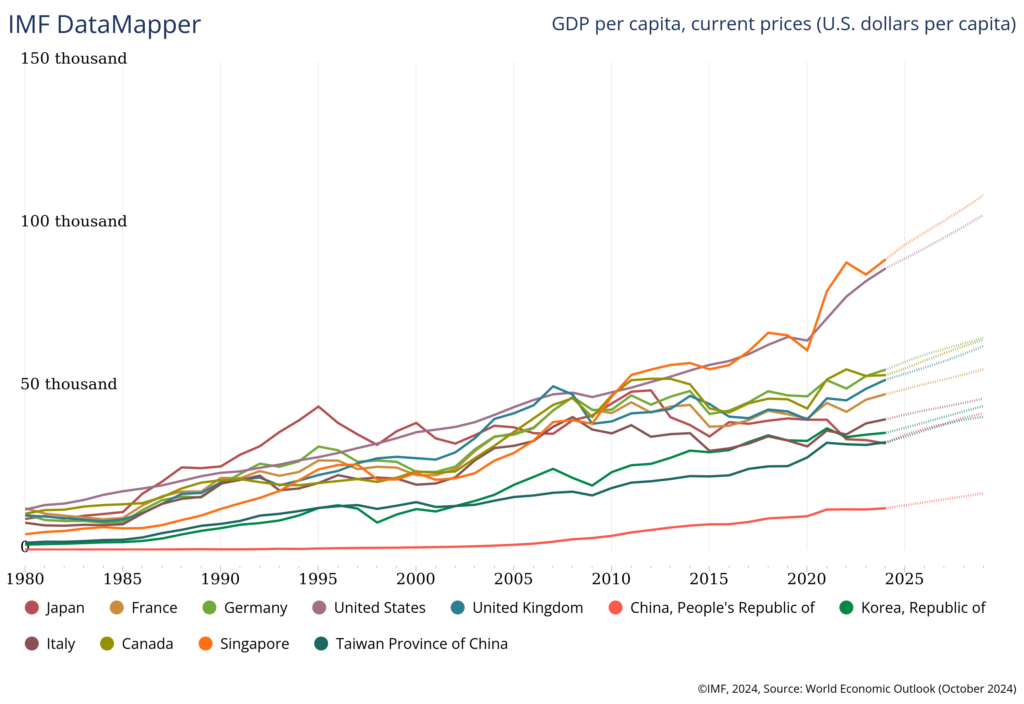日本の科学研究に対する助成事業(研究費の分配)はどのような考えのもとに企画、実施されているのかなどを俯瞰できるように、主要な出来事をまとめておきます。
1949年 日本学術会議 発足
1959年 科学技術会議(1959 ~ 2001年) が内閣総理大臣の諮問機関として旧総理府に設置
1973 “Management: Tasks, Responsibilities, Practice” Peter F. Drucker stated: “Concentration is the key to economic results. No other principle of effectiveness is violated as constantly today as the basic principle of concentration.” In 1967, The Effective Executive Peter Drucker wrote that effective executives must concentrate on a few major areas where they can achieve significant results, warning against dispersing effort too widely. *日本の科学技術予算でよく言われる「選択と集中」はドラッカーの言葉そのものではない。
1980年 米国バイドール法成立8政府資金による研究開発で得た特許を大学や企業に帰属できるようになった)
1990年 バブル崩壊(1989年が株価最高額)
1995年(平成7年)11月15日 科学技術基本法 が施行(尾身幸次氏が制定に尽力)
1996年 第1次科学技術基本計画(1996~2000)
2001年度 第2期科学技術 基本計画(2001 ~ 05年度)*「選択と集中」路線の始まり、特定4 分野への重点投資 注)科学技術予算全体を底上げされたわけではないため、選択されなかった分野や基盤的経費の予算削減をもたらした(国立大学運営費交付金の削減など)。https://www.jstage.jst.go.jp/article/tits/26/5/26_5_63/_pdf/-char/ja *・競争的資金の倍増と間接経費(30%)の導入(間接経費の制度は、米国がお手本)(科学技術庁に対して間接費の導入と引き換えに大蔵省は国立大学の基盤経費の全廃を要求したそう。(参考:『誰が科学を殺すのか』毎日新聞)
2001年 総合科学技術会議議(2001 ~ 2014年)(前身は科学技術会議)中央省庁再編に伴い新設された内閣府に設置
2001年 経産省「大学発ベンチャー1000社計画」(大学などの研究成果を事業化する目的)
2002年 知的財産戦略大綱(知的財産戦略会議)で日本版バイドール法が整備(「国・特殊法人等の委託による研究開発の成果たる知的財産権を受託者に帰属させることができる産業活力再生特別措置法第30条(いわゆる日本版バイ・ドール制度)を、特別な事情のあるものを除き、全ての委託研究開発予算について、2002年度中に適用する。」旨決定)*アメリカに遅れること約20年!
2003年(平成15年)7月 知的財産の創造、保護及び活用に関する推進計画(知的財産戦略本部決定)
2004年(平成16年)5月 知的財産推進計画2004(知的財産戦略本部決定)「日本版バイ・ドール制度の利用を徹底させる」旨決定
2004年 国立大学の法人化、以降、国立大学法人運営費交付金が年1%ずつ削減
2006年(平成18年)9月26日 ~ 第1次安倍内閣~ 2007年(平成19年)9月26日
2008年 リーマン・ショック(9月にアメリカの有力投資銀行リーマンブラザーズが破綻し世界的に株価下落、金融不安(危機)、同時不況)
2009年4月 内閣府 最先端研究開発支援プログラム(FIRST)の制度を創設 Funding Program for World-Leading Innovative R&D on Science and Technology https://www8.cao.go.jp/cstp/sentan/about.html
2009年8月~民主党政権時代~2012年12月
2009年9月4日 第84回総合科学技術会議 30課題を「最先端研究開発支援プログラム」(FIRST)の中心研究者及び研究課題を決定 1000億円を30課題に配分することに
2009年11月13日 事業仕分け「2位じゃだめなんですか」(蓮舫)
2010年(平成22年)3月9日 「最先端研究開発支援プログラム」(FIRST) 1000億円を配分する30課題の中心研究者30名決定
2010年3月 三菱化学生命科学研究所 解散(記事:相模原町田経済新聞2008.04.18)
2011年 第4期科学技術基本計画(2011~2015)
2012年12月26日 安倍内閣(第2次)~ 2020年(令和2年)9月16日
2013年 内閣府設置法の一部を改正する法律(平成26年法律第31号)*「科学技術基本計画の策定及び推進に関する事務」、「科学技術に関する関係行政機関の経費の見積りの方針の調整に関する事務」を文部科学省から内閣府に移管 *内閣府に「研究開発の成果の実用化によるイノベーションの創出の促進を図るための環境の総合的な整備に関する施策の推進に関する事務」を追加、内閣府において「戦略的イノベーション創造プログラム」を執行
2013年(平成26年)5月23日 総理大臣官邸において第1回 総合科学技術・イノベーション会議(旧称は総合科学技術会議)CSTI(Council for Science, Technology and Innovation) 戦略的イノベーション創造プログラム(SIP)について、10課題への予算配分などを決定 (*内閣府設置法改正に伴い、それまで予算の配分権は持っていなかったのが一転、内閣府は独自予算を獲得し、CSTIが自ら運営するトップダウン型の5カ年の研究開発プロジェクト「戦略的イノベーション創造プログラム(SIP、11課題、総額1580億円)」と「革新的研究開発推進プログラム(ImPACT、16課題、総額550億円)」を開始。CSTIは、客観的な立場で予算の査定をするそれまでの立場から、自ら予算を配分し、大型プロジェクトを運営する存在に転換した。https://www.jstage.jst.go.jp/article/tits/26/5/26_5_63/_pdf/-char/ja
2014年 内閣府設置法改正 総合科学技術・イノベーション会議CSTI(2014~現在)(総合科学技術会議を改組)
2014年 内閣府 戦略的イノベーション創造プログラム(SIP) CSTIが選定した研究テーマ11課題に対して5か年で総額1580億円を助成
2015年3月 大阪バイオサイエンス研究所 解散(記事:大阪府医師会 昭和62年の設立当時、大島靖・大阪市長、佐治敬三・サントリー社長、山村雄一・大阪大学総長、早石修・初代所長が諮問委員として関与した。経済活況期という時代背景の下、資金的余裕が大きな推進力となった)
2016年 第5期科学技術基本計画 『政府研究開発投資について、対GDP比の1%にすることを目指す』
2017年12月10日 筑波大学で構内の建物の連絡通路の屋根が崩落(NEWSつくば 42年前に建設、老朽化が原因か)
2018年(平成30年)「統合イノベーション戦略」 6月15日閣議決定 イノベーションに関連が深い司令塔会議である総合科学技術・イノベーション会議、デジタル社会推進会議、知的財産戦略本部、健康・医療戦略推進本部、宇宙開発戦略本部及び総合海洋政策本部並びに地理空間情報活用推進会議について、横断的かつ実質的な調整を図るとともに、同戦略を推進するため、内閣に統合イノベーション戦略推進会議(以下「会議」という。)を設置 https://www8.cao.go.jp/cstp/tougosenryaku/kaigi.html
2018年度 内閣府 第2期戦略的イノベーション創造プログラム(SIP) 12人のプログラムディレクターPDを2018年3月公募開始(公募期間2週間)、4月12日PD決定(応募者15名)*補正予算で急遽継続が決まったため事前に内定候補を決めていたことが毎日新聞にやらせ公募としてスクープされた。番狂わせ:中村祐輔氏「AIホスピタル」 戦略的イノベーション創造プログラム(SIP)第2期推進委員会
2020年度 日本の科学技術予算(当初予算)は4.4兆円、対GDP比率0.70%。(https://www.nistep.go.jp/sti_indicator/2020/RM295_12.html)(?これは文教費も込みの総額か)
2020年度(令和2年度)~高等教育無償化「高等教育の修学支援新制度」(文科省)、「私立高等学校授業料の実質無償化」(文科省)(低所得世帯に対して経済的負担を軽減するため)
2023年度(令和5年度)「こども未来戦略」(閣議決定)令和7年度から、多子世帯の学生等について、大学等の授業料・入学金を無償とする
2024年度(令和6年度)一般会計の令和6年度の文教及び科学振興費は、5兆4,716億円(令和5年度当初予算比+558億円、+1.0%)を計上している。このうち、文教関係費は4兆624億円、科学技術振興費は1兆4,092億円である。また、一般会計の文部科学省所管予算は、5兆3,384億円(令和5年度当初予算比+443億円、+0.8%)を計上している。このうち、文教関係費は4兆563億円、科学技術振興費は8,947億円、その他が3,875億円である ・ 私学助成について、経営改革や連携・統合に取り組む大学への支援を強化することで、予算を重点化するとともに、令和8年度からは、定員充足率や経営状況等が基準に満たない大学に「経営改革計画」の策定を求め、私学助成を適正化(財務省 https://www.mof.go.jp/public_relations/finance/202403/202403f.html)
2025年度 予算案 科学技術関係(科学技術振興費)1 兆4221億円(前年度当初に比べ0.9%増)
用語
- 当初予算:本予算国の年間予算として当初に成立した予算。別名当初予算。https://www.mof.go.jp/policy/budget/reference/statistics/term.htm
- 補正予算:予算作成後の事情の変更によって、その予算に不足を生じた場合、また予算の内容を変える必要が生じた場合に、出来上がった予算を変更する予算。 https://www.mof.go.jp/policy/budget/reference/statistics/term.htm
参考
- 各年度の政府予算案(科学技術関係予算)の概要 内閣府 https://www8.cao.go.jp/cstp/budget/index2.html
- 第2期科学技術基本計画 https://www8.cao.go.jp/cstp/kihonkeikaku/honbun.html (b) 間接経費 競争的資金の拡大によって、直接に研究に使われる経費は増加してきた。競争的資金をより効果的・効率的に活用するために、研究の実施に伴う研究機関の管理等に必要な経費を手当する必要がある。このため、競争的資金を獲得した研究者の属する研究機関に対して、研究費に対する一定比率の間接経費を配分する。 間接経費の比率については、米国における例等を参考とし、目安としては当面30%程度とする。この比率については、実施状況を見ながら必要に応じ見直しを図る。 間接経費は、競争的資金を獲得した研究者の研究開発環境の改善や研究機関全体の機能の向上に活用する。複数の競争的資金を獲得した研究機関は、それに係る間接経費をまとめて、効率的かつ柔軟に使用する。こうした間接経費の運用を行うことで、研究機関間の競争を促し、研究の質を高める。ただし、当該機関における間接経費の使途については、透明性が保たれるよう使用結果を競争的資金を配分する機関に報告する。 国立大学等については、国立学校特別会計の中に競争的資金を獲得した大学に間接経費が還元される仕組みを整える。 (c) 基盤的経費の取扱い 競争的資金の倍増を図っていく中で、教育研究基盤校費及び研究員当積算庁費のいわゆる基盤的経費については、競争的な研究開発環境の創出に寄与すべきとの観点から、その在り方を検討する。その際、 教育研究基盤校費については、教育を推進する経費であるとともに大学の運営を支えるために必要な経費としての性格を有すること 研究員当積算庁費については、研究機関の行政上の業務遂行に必要な研究費としての性格を有することに留意する。

